A delicious, flavorful South Indian style chutney / thogayal prepared with parsley and onion. This chutney is an excellent accompaniment for rice, idli and of course dosa. Check out this South Indian style Parsley Chutney recipe with step-wise pictures.
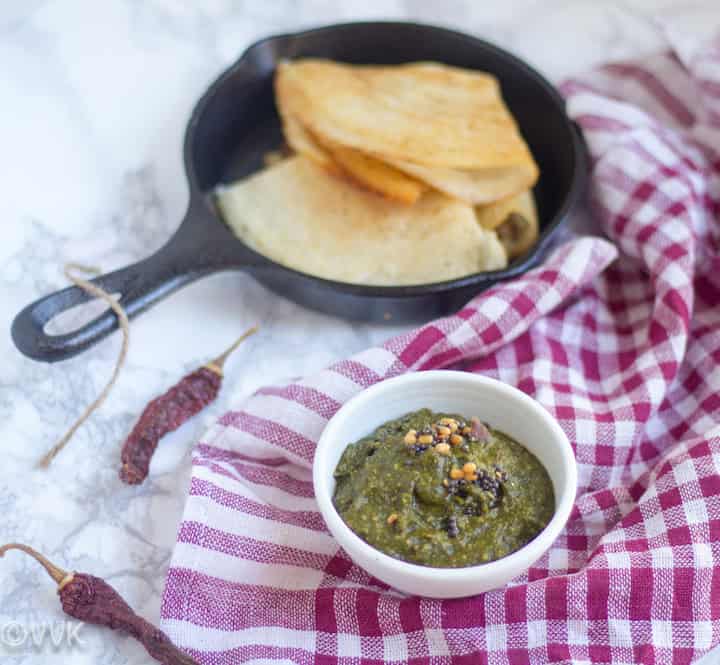
Parsley Chutney
My mom loves chutneys, so do I. More than for Tiffin, we love it with rice. Rice with chutney topped with a dollop of ghee or gingelly oil, you are in food heaven for sure. Add some papad or fryums; your meal is all set. Last week, we received a fresh bunch of parsley on our produce box, and I was thinking to use it in soup, but my mom gave this idea of prepare chutney.
We tried it right away, and it was so yum. We paired it with dosa, but it goes well with rice, idli, and upma as well. Please do give it a try and let me know how you liked it.
Parsley & Types of Parsley
Parsley is a herb that is native to the Mediterranean region, but it is widely used in European, American and Mediterranean cuisine as well. Parsley can be much more than for garnish. You can use them in soups, salads, patties, and even in curries.
Parsley has sufficient folic acid, antioxidants and it is also rich in Vitamin K, Vitamin A, and Vitamin C.
There are two types of Parsley:
- Curly leaf
- Flat-leaf or Italian Parsley
For this recipe, I went with flat-leaf parsley. I am yet to explore the curly leaf variety in dishes other than salads.
Parsley Flavor
Parsley has a strong yet delicate flavor, and it is an acquired taste as it is slightly on the bitter side. It helps to balance out the flavors in stew or soups. To begin with, you can use them in your salads, soups and see how to like the taste. Depending on that, you can adjust the quantity in the other recipes or this chutney is a perfect recipe to try.
I used one cup of loosely packed parsley, but you can add ⅓ to ½ cup of parsley and see how you like the taste. You can also increase the quantity of onion or include coconut as well.
Parsley and Cilantro
Cilantro and parsley (especially the flat leaf) look similar, but they differ. The tastes are different, and I would not recommend substituting cilantro in the place of parsley when parsley is the main ingredient. Cilantro is not bitter whereas parsley is.
If a recipe calls for curly leaf parsley as a garnish, you can substitute it with flat leaf parsley or cilantro. Coming to this recipe, you can use cilantro instead of parsley, but it becomes cilantro chutney then. :-)
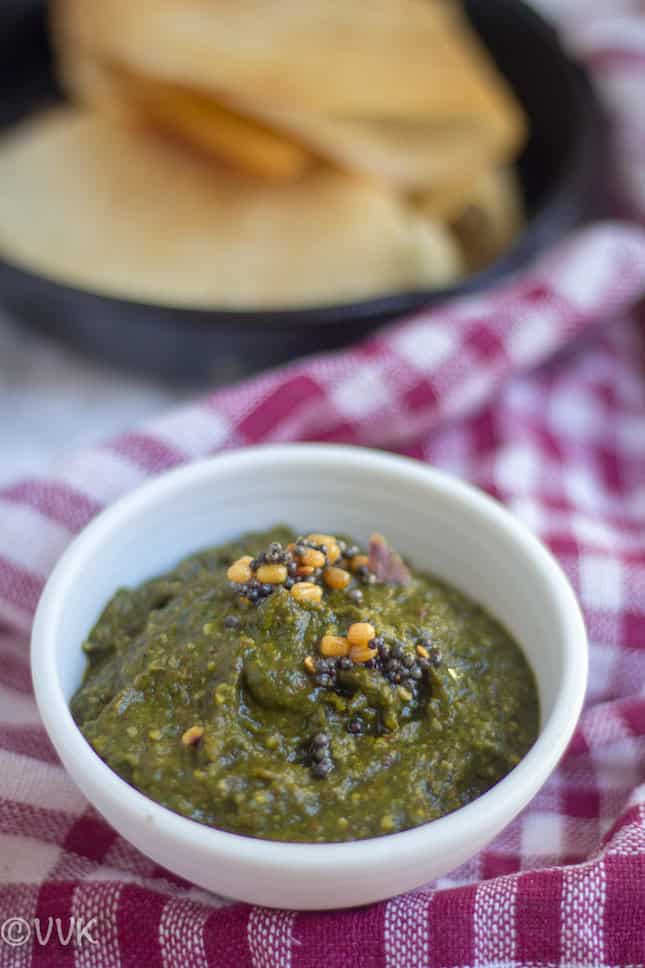
Other Herb Chutneys:
I have posted different herb-based chutneys, and you can find them below.
Parsley Chutney Recipe
Ingredients:
- Flat Leaf Parsley – 1 cup, loosely packed
- Mustard Seeds – 1 tbsp
- Urad Dal – 1 tbsp
- Dried Red Chilies – 3
- Onion – ½
- Salt – 1 tsp
- Tamarind Paste – 2 tsps
- Water – 2 tbsps
- Oil – 2 tsps
Prep-Work:
- Chop the onion roughly into small cubes.
- Wash the parsley and pat it dry.
Steps:
- Heat a pan and add two tsps of oil.
- When the oil is hot, add the mustard seeds, urad dal, and dried red chilies.
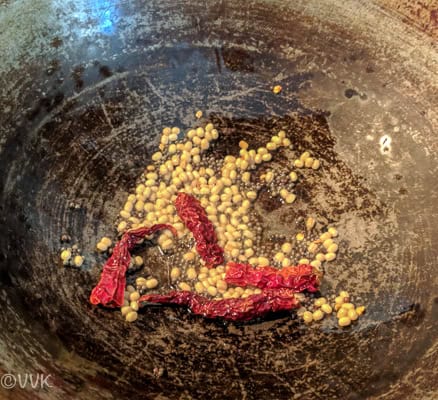
- Roast till the urad dal turns golden brown. Then set it aside. Take a ½ tsp of this tempering and set it aside to add later.
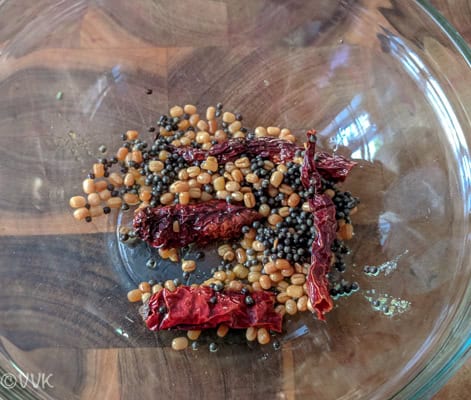
- Now in this same kadai, add the onions and fry for a couple of minutes.
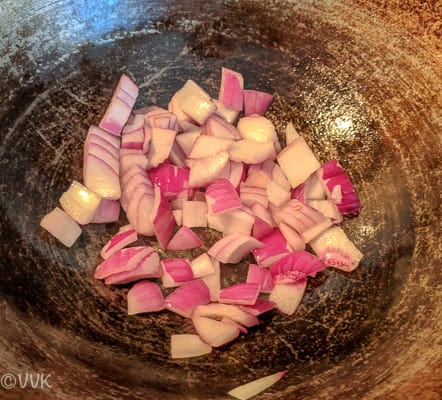
- Then add the parsley.
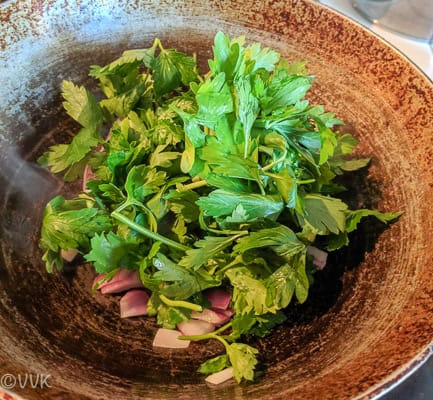
- Cook until it wilts.
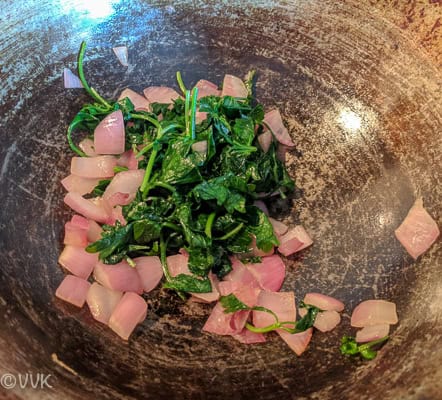
- Allow it to cool.
- Grind the onion, parsley along with salt and tamarind paste first.
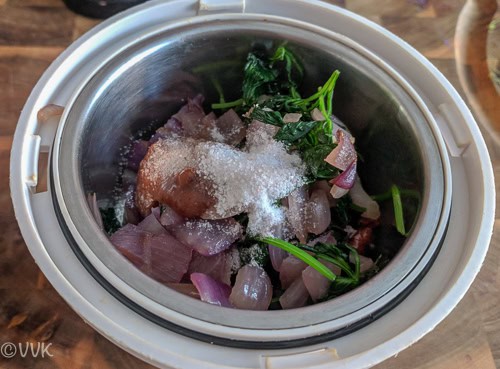
- Then add the urad dal, mustard seed, red chili mixture and grind it coarsely. If required sprinkle some water but not more than 2 tbsps.
- Finally, add the ½ tsp of tempering and serve it with idli or dosa or rice.
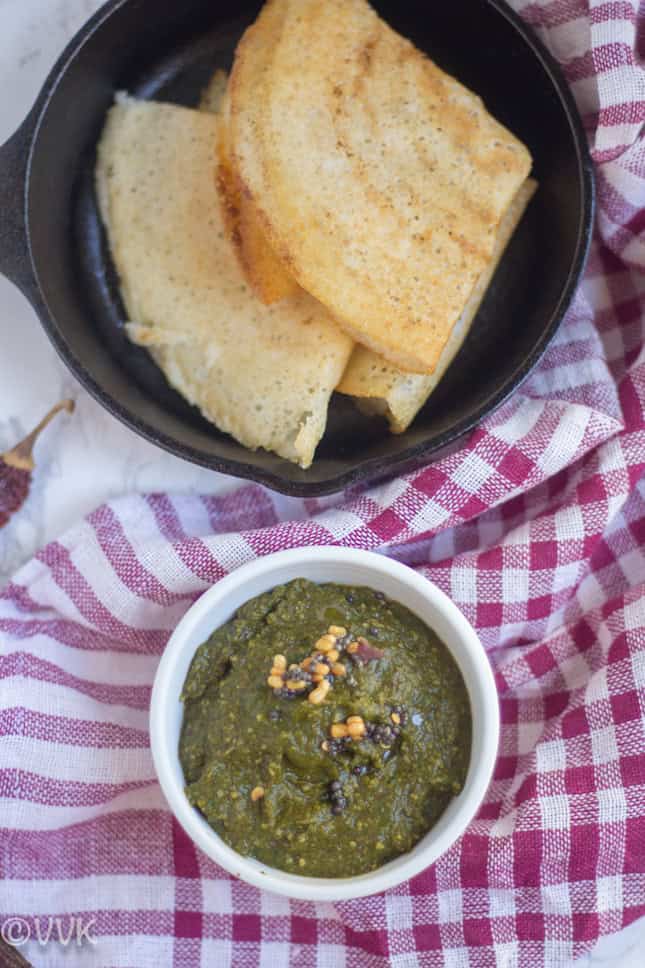
As we grind mustard seeds(it is a natural preservative) along with the chutney, the shelf life of this chutney is comparatively more prolonged than other ones. You can refrigerate it for one week too.
Notes:
- Instead of tamarind paste, you can add betelnut size of tamarind as well.
- Adjust salt and spices as per your preference.
- You can reduce the parsley or add more onion or coconut if you are trying parsley for the first time.
📖 Recipe
Parsley Chutney | South Indian Style Parsley Thogayal
Ingredients
- 1 cup Flat Leaf Parsley loosely packed
- 1 tbsp Mustard Seeds
- 1 tbsp Urad Dal
- 3 Dried Red Chilies
- ½ Onion
- 1 tsp Salt
- 2 tsps Tamarind Paste
- 2 tbsps Water
- 2 tsps Oil
Instructions
- Chop the onion roughly into small cubes. Wash the parsley and pat it dry. Heat a pan and add two tsps of oil. When the oil is hot, add the mustard seeds, urad dal, and dried red chilies. Roast till the urad dal turns golden brown. Then set it aside. Take a ½ tsp of this tempering and set it aside to add later.
- Now in this same kadai, add the onions and fry for a couple of minutes.
- Then add the parsley and cook until it wilts. Allow it to cool.
- Grind the onion, parsley along with salt and tamarind paste first. Then add the urad dal, mustard seed, red chili mixture and grind it coarsely. If required sprinkle some water but not more than 2 tbsps.
- Finally, add the ½ tsp of tempering and serve it with idli or dosa or rice.
Notes
- As we grind mustard seeds(it is a natural preservative) along with the chutney, the shelf life of this chutney is comparatively more prolonged than other ones. You can refrigerate it for one week too.
- Instead of tamarind paste, you can add betelnut size of tamarind as well.
- Adjust salt and spices as per your preference.
- You can reduce the parsley or add more onion or coconut if you are trying parsley for the first time.
Nutrition
I am not a nutritionist. The nutritional information is provided as a courtesy and is an estimate only. It varies depending upon the product types or brands.
P.S. Follow my Pinterest boards for more healthy and delicious recipes.
Enjoying Parsley Chutney? You will love these, too:
- Coconut Chutney | South Indian Style White Coconut Chutney
- Coconut Powder | Thengai Podi
- Pacha Manga Chammanthi | Raw Mango Chutney
- Tomato Thokku
- Beetroot Kichadi | Onam Sadya Recipe





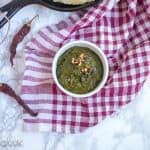
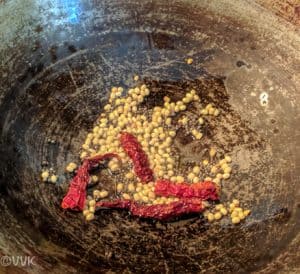
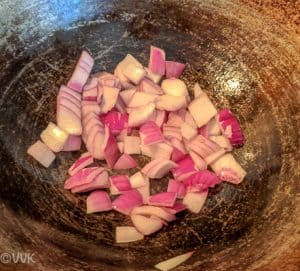
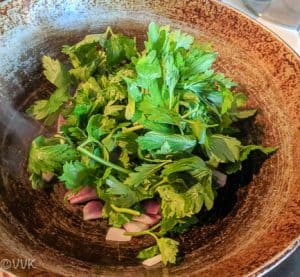
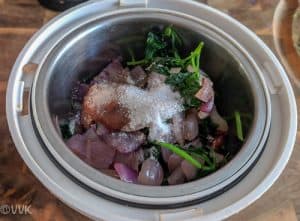
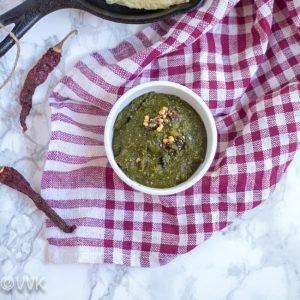

Really nice taste.
Thank you
I could enjoy this chutney with so many of my favorite mains. Delicious!
Srividhya,
Thank you for this lovely and delicious recipe. I tried it today and it tastes really good.
I didn’t have aurad dal so I used yellow king dal and they remained a little to hard and crunchy for my preference.
Does the Urad dal Soften more? What could I have done differently to have a softer texture to the dal?
Thank you again for your offerings.
Best
Maria
Thanks a lot for trying and glad you liked it. After roasting the dal, probably you can soak it in water for 30 minutes to soften a bit. That would soften the dal. I hope this helps. Thanks a lot. :-)